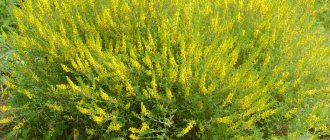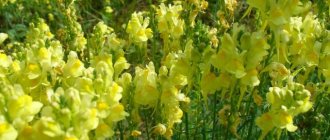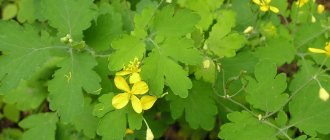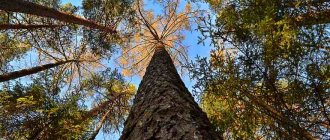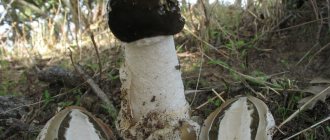Barberry is a deciduous thorny shrub up to three meters high. The berries, leaves, roots and bark of the plant are used for medicinal purposes. Common and Amur barberries are mainly used. They have almost the same properties, since they are species of similar origin.
The medicinal properties of barberry were known even in Ancient Mesopotamia. Today, the flowers, leaves, bark, roots and berries of this plant are widely used in medicine, and are also used as raw materials for the production of homeopathic and pharmaceutical preparations. The following barberry preparations are used in medicine:
- cholelitin;
- berberine biosulfate;
- barberry tincture.
Compound
Barberry, the medicinal properties and contraindications of which we will consider in detail in this article, contains the alkaloid berberine, which determines the choleretic properties of the plant. It includes:
- carotene;
- alkaloids;
- tannins;
- ascorbic acid;
- organic acids;
- tocopherol
Composition of barberry
Thanks to its components, the plant has a number of medicinal properties. Moreover, useful components are found not only in ripened fruits, but also in the roots, leaves and bark. Barberry berries are rich in vitamins A, PP, C, B1 and B2. In addition, they contain the following microelements:
- essential oils;
- organic acids;
- fructose;
- carotene;
- glucose;
- pectin;
- alkaloids.
Many consider barberry leaves to be an excellent antiseptic and anti-inflammatory agent. They contain resinous components, malic acids, as well as vitamins K and E. Young roots contain one and a half dozen alkaloids, which allows them to be used in folk medicine.
Beneficial features
Barberry, the medicinal properties and contraindications for use of which have been known for a long time, is used for such pathologies as:
- kidney disease (including kidney stones);
- liver diseases;
- gallbladder disease (including cholelithiasis);
- hepatocholecystitis;
- inflammation of the gallbladder;
- dysentery;
- spleen diseases;
- stomach cramps, stomach pathologies;
- eye pathologies;
- heat;
- oral diseases;
- malaria;
- tuberculosis;
- scurvy;
- pleurisy;
- rheumatism;
- gout;
- lumbago;
- diseases of the throat, stomach and liver;
- bleeding associated with childbirth;
- postpartum uterine bleeding;
- reverse slow development of the uterus after abortion or childbirth;
- bleeding due to uterine inflammation;
- toxicosis of pregnant women;
- haemorrhoids;
- heart pain;
- hypertension;
- diabetes.
In addition, barberry-based preparations are used as:
- antiseptic;
- means to increase appetite;
- laxative;
- diaphoretic and antipyretic;
- tonic.
The barberry bush has very diverse medicinal properties, but one of them is unique - it relieves attacks of vomiting and nausea. Due to this, the plant is actively used by pregnant girls for toxicosis, since pharmaceutical drugs that have the same effect generally have various side effects. In addition, it can relieve coughing attacks, especially when the bronchi are clogged with phlegm.
Barberry even finds its use in the treatment of various oncological diseases. Thus, scientists were able to prove that berberine, which is part of it, has anti-leukemia and anti-tumor effects. At the same time, berberine cannot be synthesized today. Since this discovery was made recently, at the moment it is used only by rare experts in alternative medicine who have studied the antitumor properties of this plant.
Medicinal properties
Barberry root products have the following effects:
- choleretic;
- anti-inflammatory;
- antimicrobial;
- astringent;
- hemostatic;
- diuretic;
- pain reliever;
- antimicrobial.
The listed medicinal properties of barberry root allow it to be used for inflammatory diseases of the liver, pancreas, gallbladder, gallstones and peptic ulcers, to increase appetite and relieve stomach spasms. Remedies from it help with inflammation in the genitourinary system and in the upper respiratory tract, dropsy, edema, and heart rhythm disturbances. They are used to stop bleeding, in particular during uterine bleeding in the postpartum period, to stimulate uterine contractions after childbirth, for gastrointestinal infections, dysentery, diarrhea, to reduce blood pressure and strengthen the heart muscle. It has been established that the alkaloid berberine, which is part of the roots of the plant, has antitumor activity and can be used in the complex therapy of certain malignant neoplasms.
Externally, barberry root in the form of a decoction is effective for rinsing and lotions for various skin lesions (wounds, ulcers) and inflammation in the oral cavity (gingivitis, periodontitis, stomatitis, sore throat). It helps with chronic joint diseases, gout, lumbago, rheumatism, neuralgia.
The alkaloid berberine, which is part of some medications, is isolated from barberry root in the form of hydrosulfate. Effective methods for producing this compound synthetically have not yet been developed.
Interesting: Common barberry flowers produce nectar, which is collected by honey bees. The honey obtained from it has a golden yellow color, delicate taste and pleasant aroma.
Leaves
In order to prepare a vodka tincture of barberry leaves, you need to take these ingredients in a 5:1 ratio, respectively. The finished mixture is infused for 15 days. Take 25 drops three times a day for 20 days. Then a break of 10 days is necessary, then the course is repeated. This tincture is used in the postpartum period for atonic bleeding, bleeding that is caused by inflammation, uterine subinvolution, in addition, in gynecological and obstetric practice.
Barberry leaves, whose medicinal properties help in the treatment of various diseases, are also used to make another infusion. To do this, 2 tablespoons of dried leaves need to be infused for an hour in a glass of boiling water. Then the infusion is filtered and consumed a tablespoon several times a day for one month. It is used for pathologies of the gallbladder and liver as a choleretic and anti-inflammatory agent.
How to cook
The beneficial properties of barberry root are preserved as much as possible when creating decoctions and infusions. You can also use alcohol tinctures. These drugs are used to treat a variety of ailments. To figure out how to take folk remedies, you should familiarize yourself with individual recipes. The recipes below will help you understand how to prepare medicinal products.
From the stones
A decoction is often made from the bark to help get rid of gallstones. For cooking take according to Art. l. roots and bark, add water (300 ml). After boiling for 30 minutes, add water according to the volume of boiled liquid. Drink the solution 3 times a day, 50 ml.
For rheumatism
To treat rheumatism, a decoction of dried roots is often used. Plant mass in the amount of 1 tbsp. l. 400 ml of boiling water is poured in, and the resulting solution is boiled for 5 minutes. The strained liquid is consumed half a glass 2-3 times a day.
Tinctures and infusions
An alcohol tincture from the roots of the plant is prepared according to a simple recipe. For it you will need:
- 4 tbsp. l. roots;
- half a glass of alcohol.
The roots must be infused for 2 days without light. You can take 5 drops 3 times a day.
Infusions from different parts of the plant also have a healing effect. For example, when restoring ligaments after sprains, roots are used. They need to be dried. Add 200 ml of water to a tablespoon of the prepared mixture and boil for 15 minutes. This decoction is used for compresses.
Kidney diseases are treated with an infusion of the bark. During the preparation of the infusion, 3 tbsp. l. dried mass is poured with 2 glasses of water and left for several hours. It is better to keep the liquid in a thermos. The infusion is taken for a month, half a glass 4 times a day.
The roots can be used to reduce inflammation in the gums. This is explained by the fact that the plant contains tannins. To reduce inflammation of the gums, it is enough to rinse your mouth daily with infusions of the roots.
Important! Leaves and fresh fruits can be used as tea. To prepare it you will need 1 tsp. berries and leaves. They are poured with boiling water and left for an hour.
Fruit decoction
The medicinal properties of barberry have been used in alternative medicine for several centuries. The berries are used to prepare a decoction. To do this, you need to take 2 tablespoons of fruit, add ½ tablespoon of water, put on fire and boil for 20 minutes. Then bring the broth with water to its original volume. You need to take 50 ml three times a day. A decoction of the fruit is used as a diuretic, choleretic, diaphoretic, for coughs, bronchitis, colds, and pneumonia.
Ripe fruits mixed with honey are an excellent vitamin remedy that increases immunity and the defenses of the human body, and is also useful for vitamin deficiency.
Barberry: description
We become acquainted with barberry in absentia in childhood. Famous candies quite accurately convey the pleasant sour taste of its berries. It is a deciduous shrub of the barberry family, up to 3 meters high. The root system is superficial, branched. About 500 species of this plant are known.
The bush consists of a large number of ribbed branches, both young and old, and their number is constantly replenished. The bark of old branches is gray, young ones have a yellow tint. The branches are covered with long (about 0.5 cm) sharp spines, simple or tripartite. In the latter case, the kidneys are located in their sinuses. Branches of the following order develop from the buds. They are covered with serrate leaves, at the ends of which there are spiny cilia.
In spring, in May, the bush is covered with bright yellow clusters of flowers.
Each inflorescence is an axillary drooping raceme consisting of two dozen small flowers. It blooms for a long time, almost a month. The flowers open gradually, from the top to the bottom. Their strong, pleasant scent attracts bees.
In their place, fruits are formed, exactly the same as on the cover of the famous candy. They fully ripen by the end of September. The color of the fruit is bright red or black, the color of the seeds is dark brown. The berry is juicy, with a thin but durable peel. She allows him to hang on a branch even in winter. True, under the influence of frost it flattens a little. But its taste improves. The weight of the fruit depends on the variety, but does not exceed 4 g.
Contraindications
- The fruits are contraindicated for people suffering from thrombophlebitis, with high stomach acidity, as well as for people in a pre-infarction state.
- With prolonged use of barberry, constipation (constipation) may develop.
- In gynecology and obstetrics, barberry is prohibited for bleeding caused by failure to remove placental fragments from the uterus after childbirth and ovarian dysfunction.
- It is also contraindicated during menopause with bleeding.
- Since preparations from the roots and bark constrict blood vessels and increase blood clotting, they cannot be used for heart pathologies, spasms of cerebral vessels, and high thrombus formation.
- An infusion of leaves should not be used by pregnant women.
- Cirrhosis of the liver.
- A decoction of the roots reduces blood pressure and is therefore contraindicated for hypotension.
- Children under 12 years old.
In addition, you need to remember that unripe barberry is poisonous. The medicinal properties and contraindications for taking the plant are now known to you! All the best!
Features of common barberry
Common barberry. Botanical illustration from the book “Flora von Deutschland, Österreich und der Schweiz” by O. V. Thome, 1885.
The unpretentious shrub grows on different types of soil, being content even with the poorest. Its drought resistance determines the region of distribution - in warm and hot climatic zones. Thanks to the presence of countless thorns on the trunk and shoots, it slowly consumes the moisture consumed, so it does not dry out even in the hottest periods.
In Russia, common barberry is found from the Leningrad region to the Crimea, in the Volga region and the Caucasus. The shrub is cultivated; it is often planted for decorative purposes in parks, forest belts and summer cottages. It produces active shoots and often runs wild, so it can be extremely difficult to outwardly distinguish the “ordinary” variety from the originally wild analogue of Amur barberry. The latter grows in less warm regions, occurring in the Far East. Amur barberry grows on even poorer soils, rocky embankments along the banks of reservoirs.
Description
What is barberry? This is a beautiful shrub that grows to a height of no more than three meters. Branched, with a powerful, highly developed root, capable of extracting moisture from great depths. The yellowish-gray branches are completely covered with thorns, the number of which does not decrease on young shoots. The neat, elliptical-shaped leaves are short, only up to four centimeters in length, with a thin carved edge.
The plant blooms in May and the first ten days of summer. Then it is covered with multiple bright yellow flowers, collected in luxurious brushes-inflorescences. One such brush can contain up to twenty-five bunches of small round flowers. The fruits ripen in August, during which time the bush turns red. Clusters of barberry fruits are bunches of berries, each of which reaches ten to twelve centimeters in length. Without organized collection, they remain on the bush for a very long time, often persisting throughout the winter.
Cultivation
The barberry plant is often chosen to decorate summer cottages. There are no difficulties with its cultivation. It can be planted in the shade or on the sunny side, and in each case the crop will definitely be accepted. It will show abundant growth on fertile soil, but it will also grow and bear fruit on sandy loams every year.
Different parts of green barberry are suitable for propagation. In summer, you can cut a cutting from an adult shrub, which should be buried in the soil. The crop is also propagated by root suckers or by dividing an adult bush. However, in the latter case, there is a risk that the “parent” will die if it loses more than one third of the root.
Collection and preparation
All parts of the plant have valuable qualities. Barberry leaves, its root and bark, and fruits are harvested.
- Leaves. Harvesting is carried out during the flowering period of the crop. Work is carried out using gloves to prevent injuries to the palms. Leaves can be torn off or shoots cut off with a knife, being careful not to damage the thin shoots. Dry the leaves under a canopy, without direct access to sunlight. Spread on paper in a thin layer and stir periodically to dry evenly.
- Rhizome. The roots are collected in the autumn, when they accumulate valuable substances in maximum concentration. Parts of the rhizome are dug out with a shovel, thin shoots are cut off. Work should be carried out with caution, removing no more than one third of the rhizome from one shrub. Cutting down the root in large quantities can lead to the death of the plant. It is not allowed to harvest raw materials from the same plant every year. To completely restore the root system, barberry requires five to ten years. After removal from the soil, it is not recommended to wash the roots, since they lose valuable substances with water. They must be peeled off the ground and, if necessary, chopped into pieces up to twenty centimeters long and six centimeters wide. Dry the rhizome in well-ventilated areas, spread out on newspapers or hung in “beads”. After drying, they are stored in the form of bales, wrapped in newspapers or breathable burlap. The raw material should be ventilated regularly to avoid moisture concentration in it.
- Fruit. Barberry berries are harvested at different periods of ripening. Green berries are rich in alkaloids; as they ripen, they completely lose these substances, but accumulate valuable acids. Red barberry berries are collected for therapeutic purposes; the beneficial properties of red ones are manifested in dietary nutrition for diabetes and decreased appetite.
How to make scions and rootstocks for an apple tree?
Recently, the barberry rhizome has not been fully used. Research has revealed a high content of valuable substances in the bark, while in the fleshy part there are significantly fewer of them. The bark is peeled from the root and dried in the same way. All types of raw materials can be stored at low humidity levels for up to three years.
Composition and properties
The medicinal properties of barberry are associated with the content of more than ten types of alkaloids in it. Substances of the isoquinoline series are found in different concentrations in each plant organ. They are completely lost as the fruits ripen, but during the same period they accumulate in the root. The properties of berberine, which makes up the main part of the alkaloid series, have been sufficiently studied. The substance affects the biliary system and blood clotting.
Ripe barberry berries have a high acid content. Malic, citric and tartaric acids give the fruits a recognizable sourness. The beneficial properties of barberry berries at the stage of full maturity are determined by their high content of vitamins. The volume of vitamin C is up to one hundred and twenty percent. One hundred grams of fruit contains up to eighty milligrams of vitamin K.
Planting barberry
Barberry is extremely unpretentious; it is not afraid of winds and drafts. He has only one "demand". The plant has a very negative attitude towards water stagnating at the roots. Therefore, you should not plant it where groundwater comes closer to the soil surface than 1.5 m, and in any lowlands. Melt and rainwater and moist, damp air stagnate in them for a long time.
Variegated and ornamental varieties with rich colors are best planted in a sunny area. In the shade, the shade may become faded, the pattern and border may disappear completely.
It is advisable to choose a place immediately and forever. Barberry does not tolerate replanting, especially if the soil is shaken off the roots. It may take the plant 2–3 years to “move away” from it.
To show its best qualities, barberry needs warmth and sunlight.
If the root system of a barberry seedling is closed, it is better to plant it in early spring, before the growth buds wake up. Also a good time for the procedure is the end of August or the beginning of autumn.
The planting pit for barberry is prepared 2–3 weeks before the intended planting. Its root system is developed, but superficial. Therefore, 40 cm in depth and the same in diameter is enough. A layer of drainage 3–4 cm thick is desirable at the bottom. Fertile soil extracted from the pit is mixed with fertilizers (200 g of simple superphosphate and 120 g of potassium sulfate) and poured back, forming a low mound at the bottom. A natural alternative to mineral fertilizers is humus (5–7 l) and wood ash (0.8–1 l).
The root system of barberry is superficial; there is no need to dig a deep hole.
In acidic soil, barberry survives, but grows and develops poorly and may change the color of the leaves. Therefore, it is advisable to find out the acid-base balance in advance and add dolomite flour, slaked lime, and powdered eggshells to the pit, if necessary.
There is nothing complicated about the landing itself. It is not much different from a similar procedure for other berry bushes. For the procedure, choose a cloudy, non-hot day. The roots are trimmed to living greenish-yellow tissue, shortened by about a third. The most important thing is not to deepen the root collar in the process. It should be located 3–5 cm above the ground surface. Newly planted plants are watered abundantly, and when the moisture is absorbed, the soil is mulched. All existing shoots are shortened, leaving no more than 3–4 growth buds, and the leaves (during autumn planting) are torn off. Over the next 2-3 weeks, the seedlings should be protected from direct sunlight. You can, for example, build a canopy from any covering material.
When planting barberry, you need to ensure that the root collar remains above the surface of the ground.
Single plants are planted at a distance of at least 1.5 m from other trees and shrubs, otherwise the expected decorative effect will not be achieved. When planning a hedge, the bushes are placed in a checkerboard pattern, leaving 20–25 cm between them.



